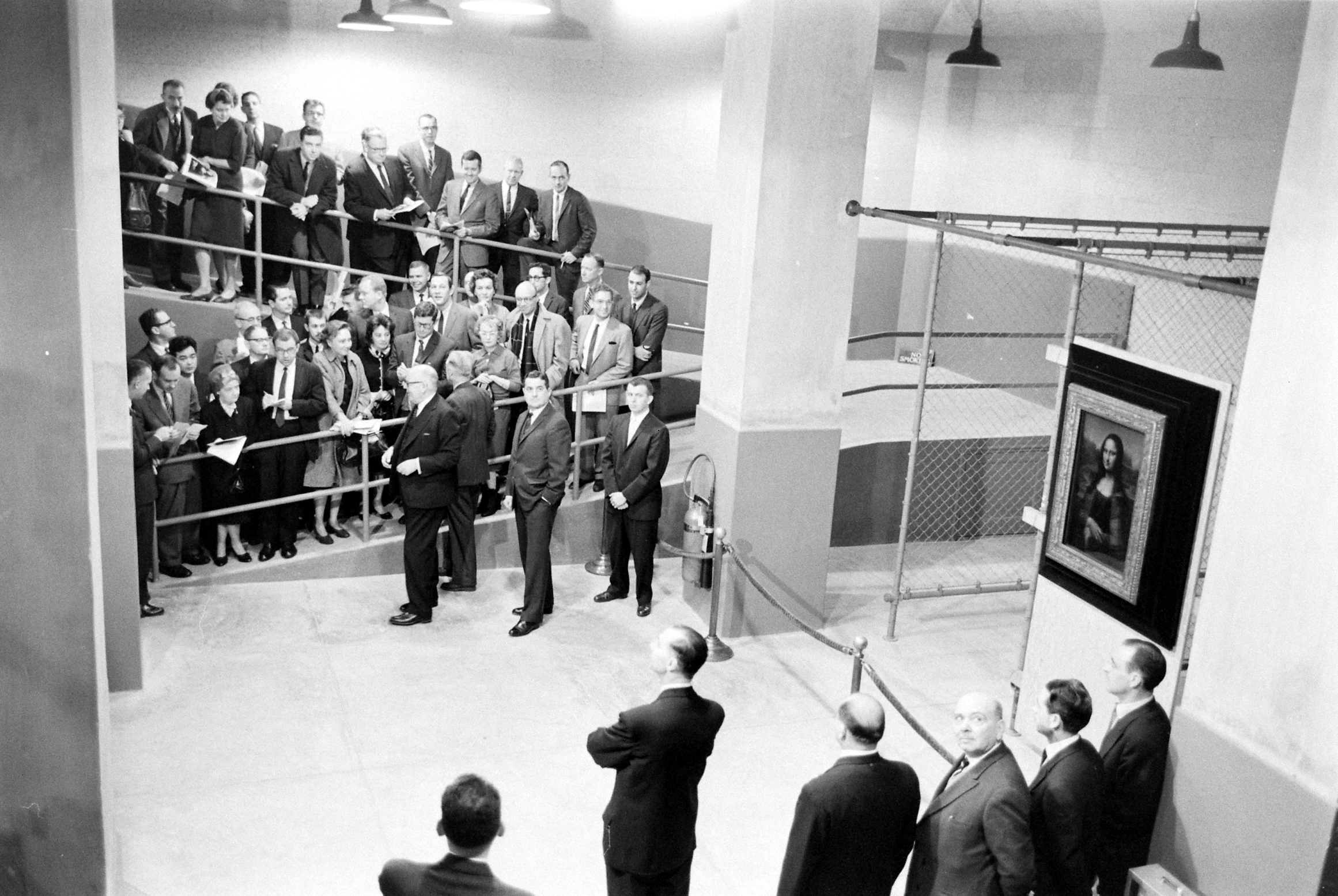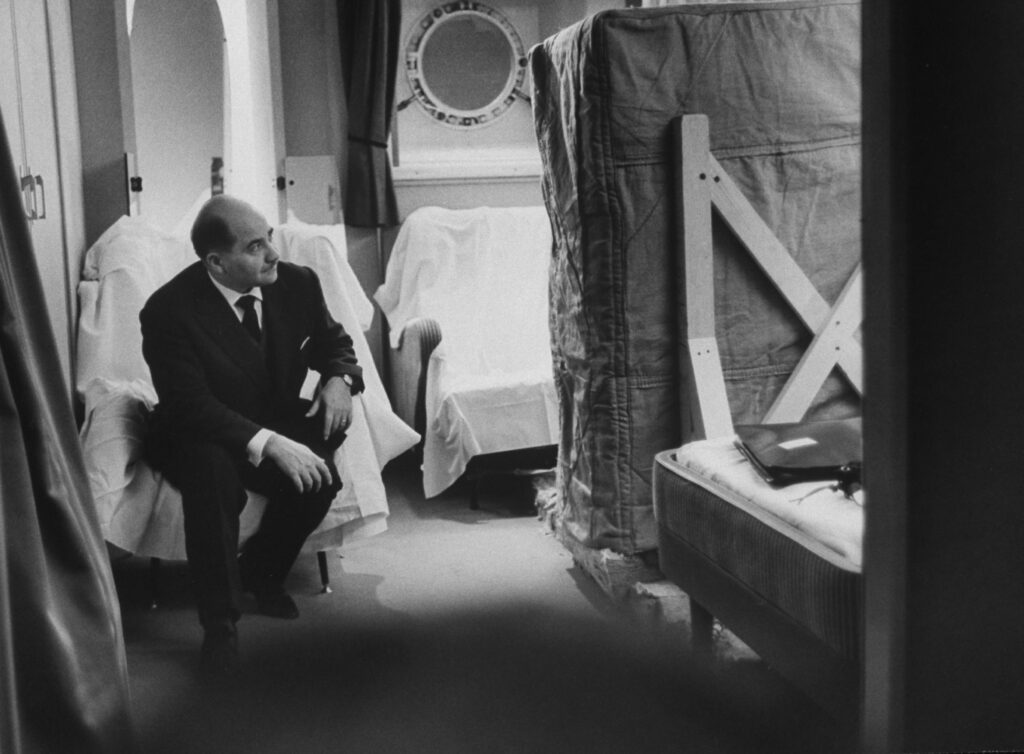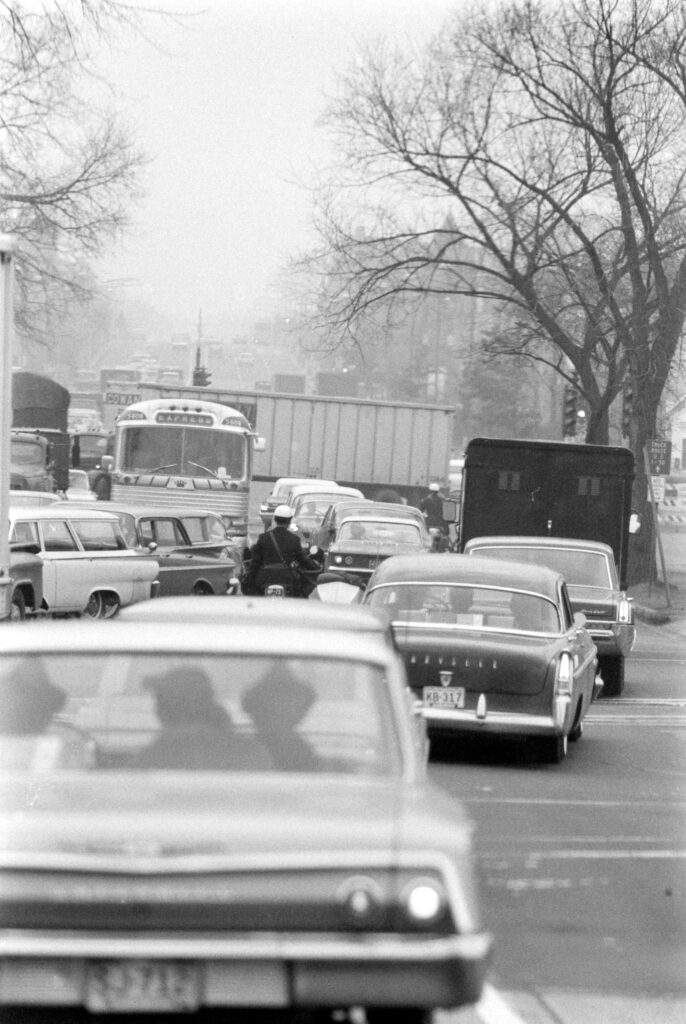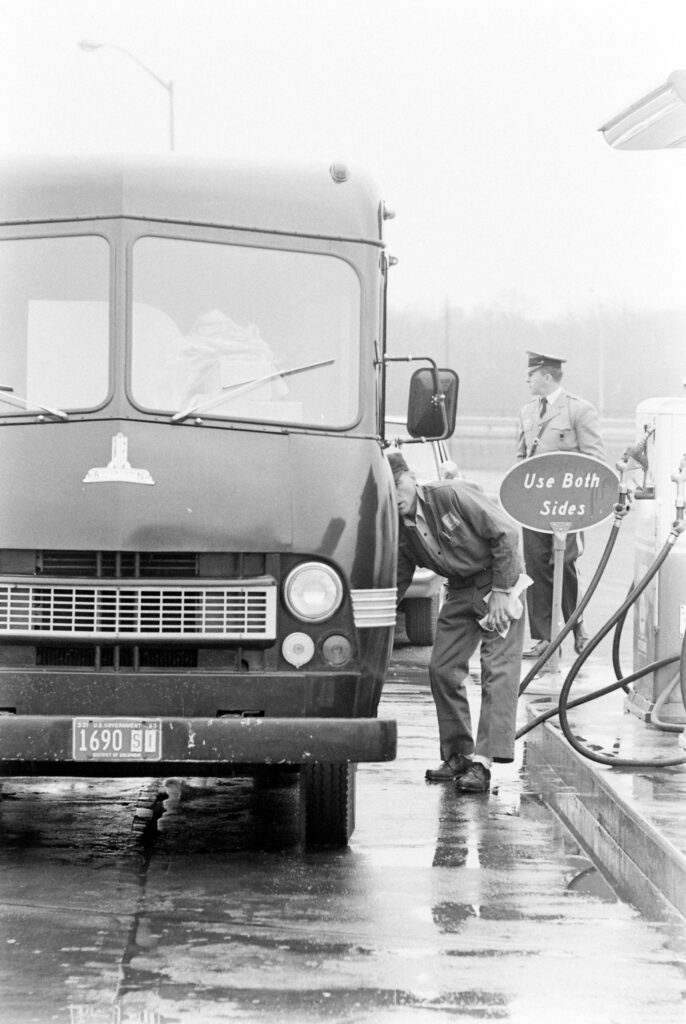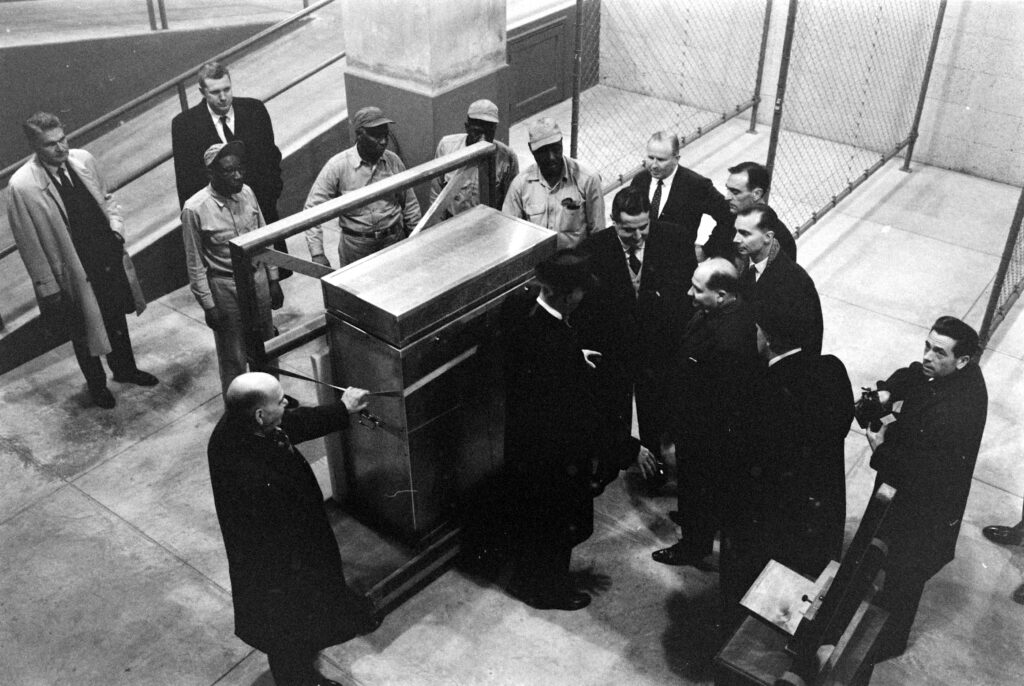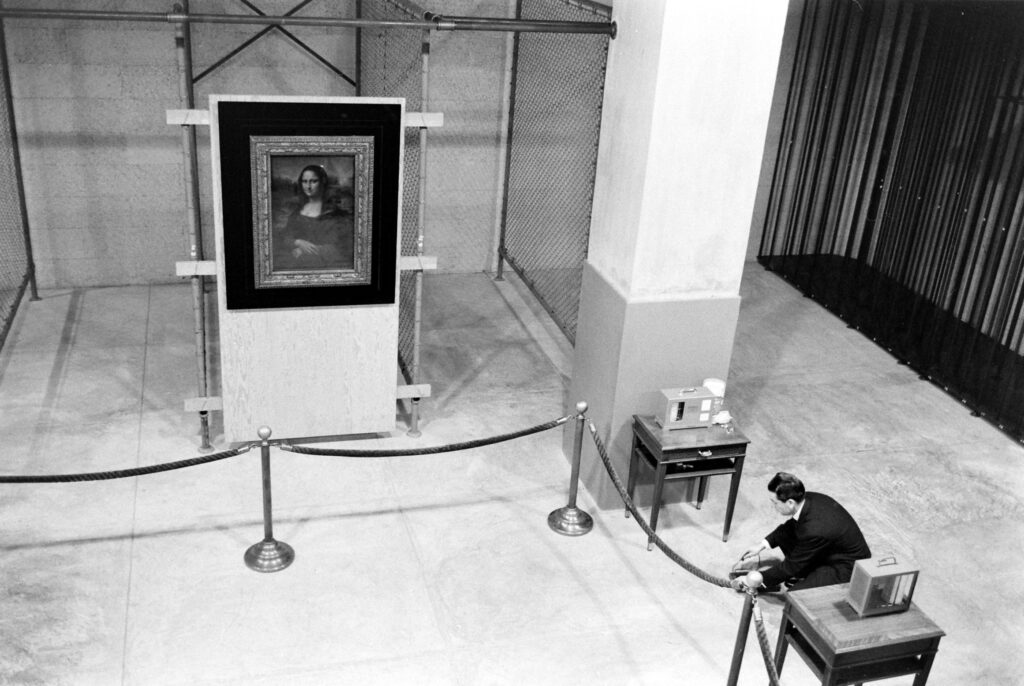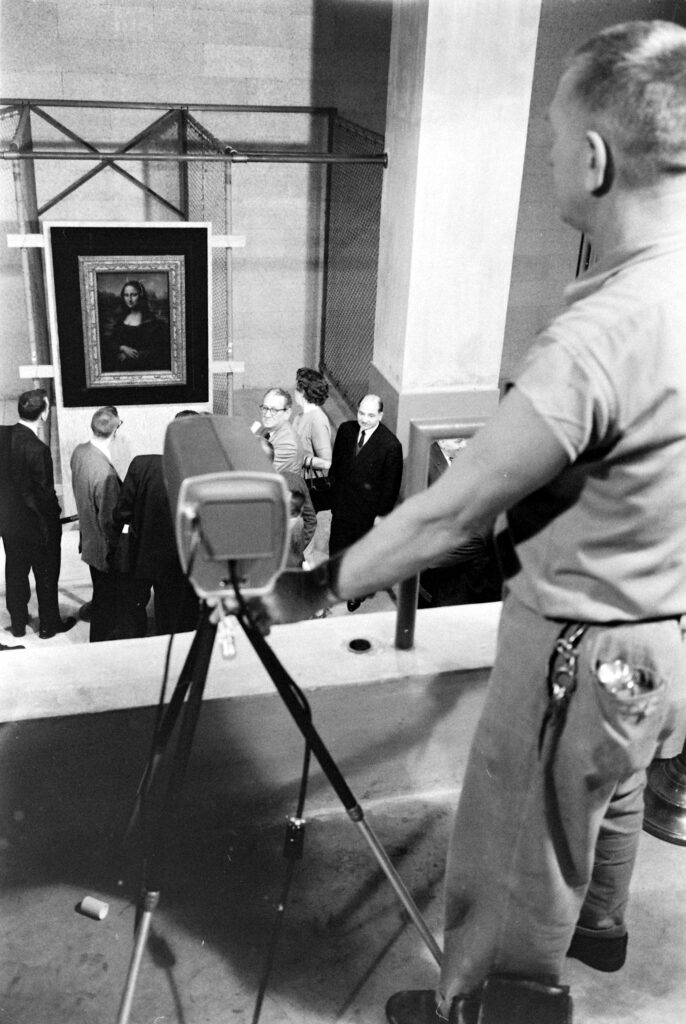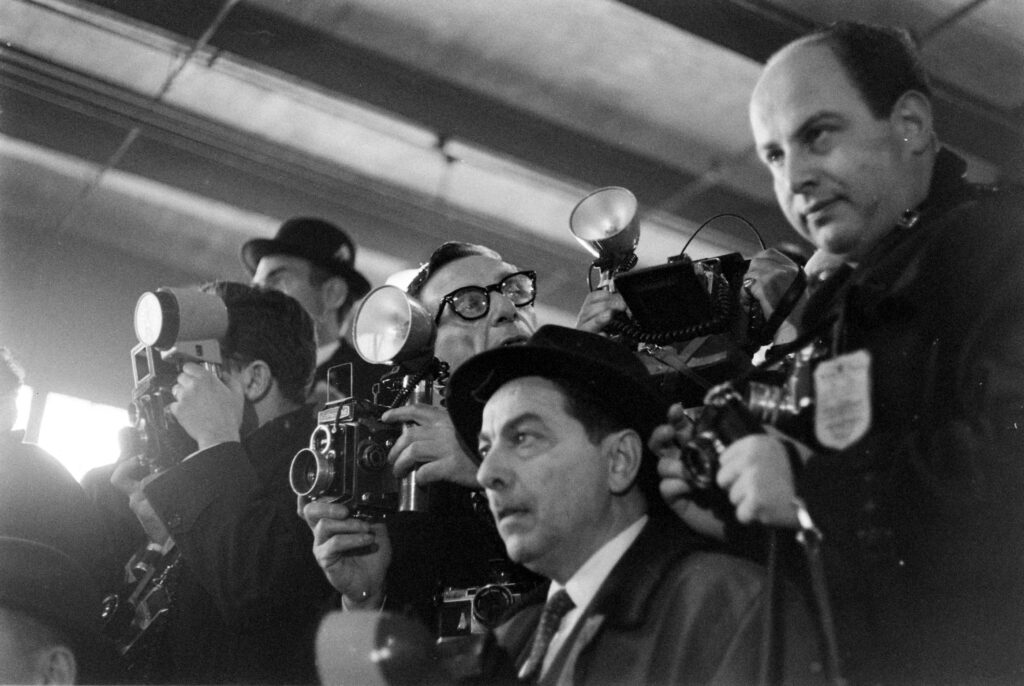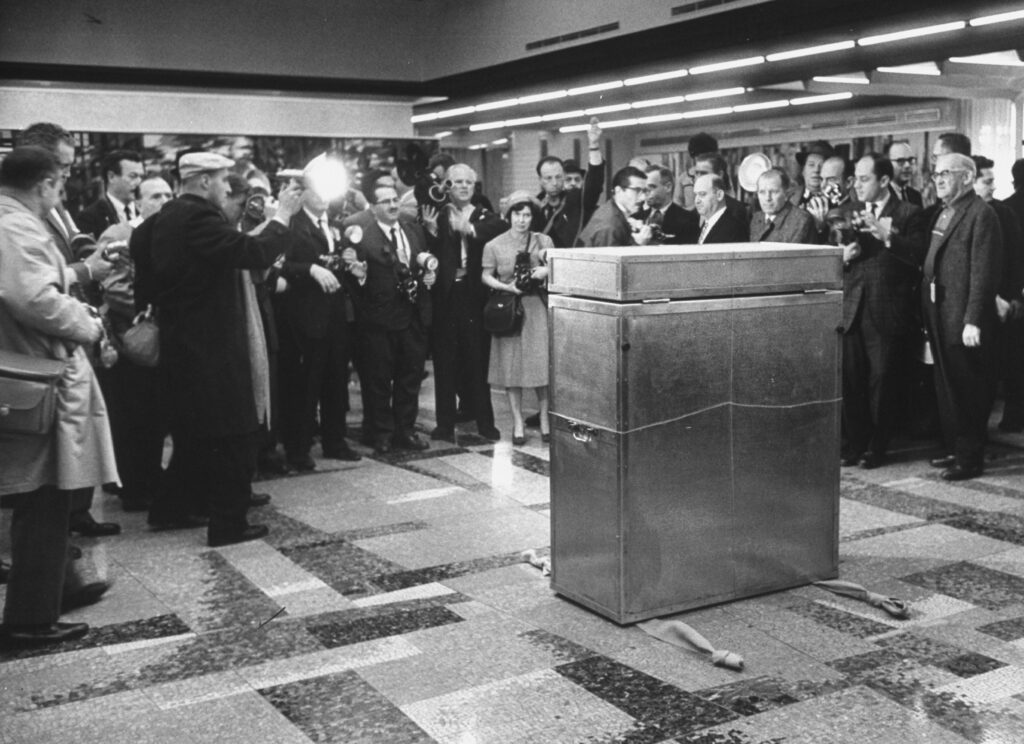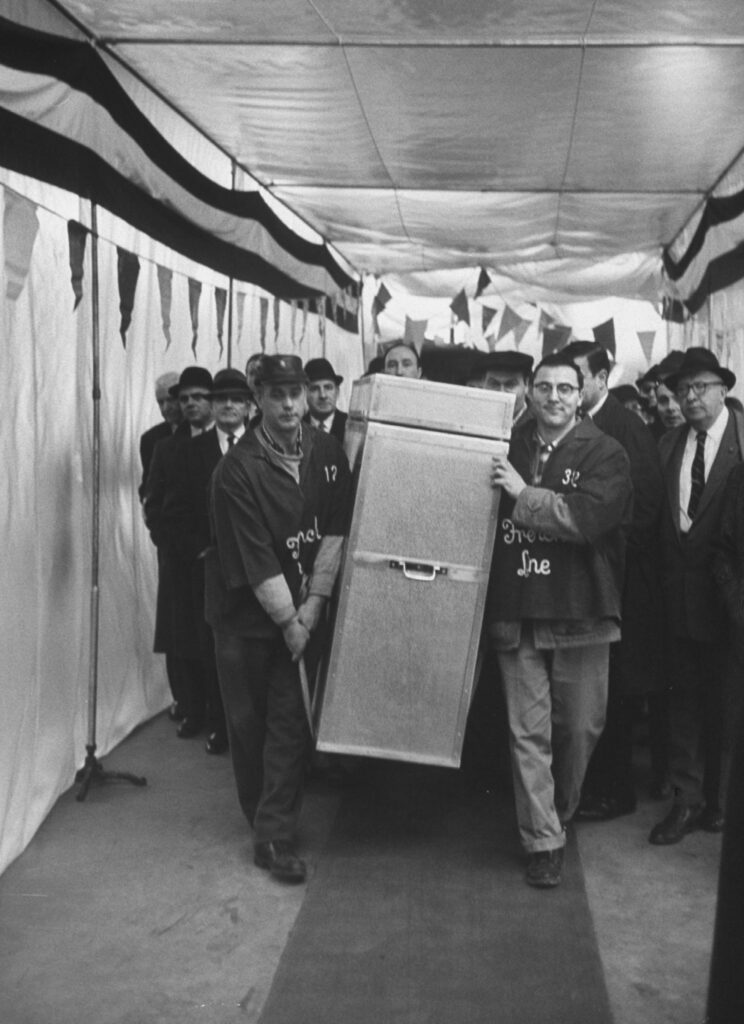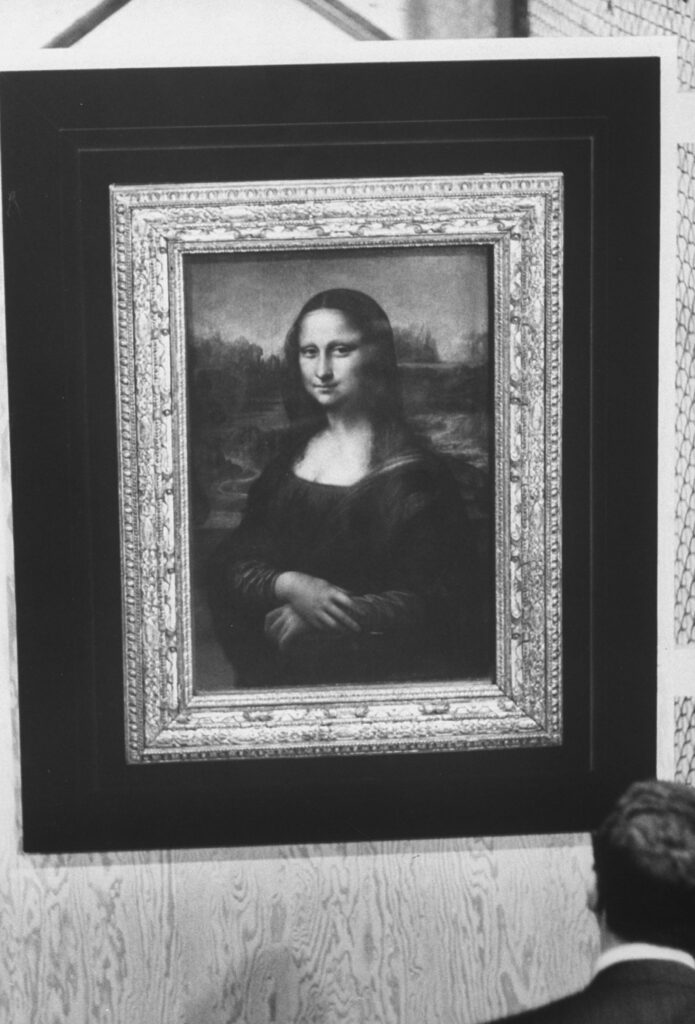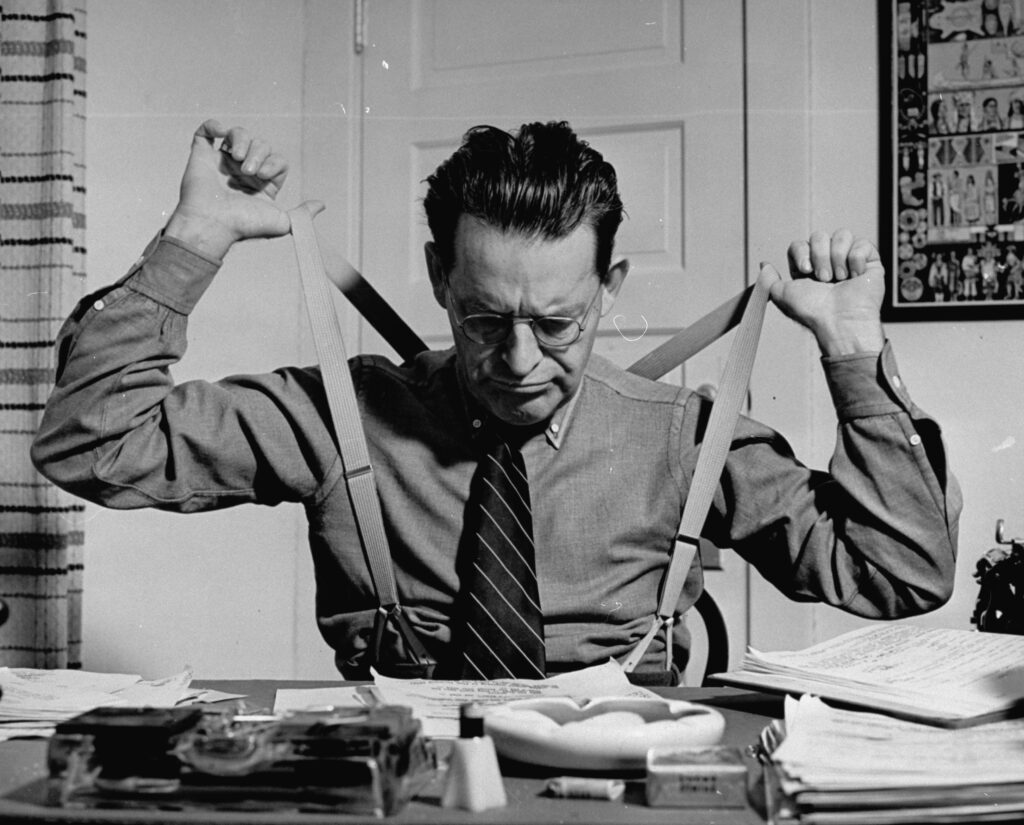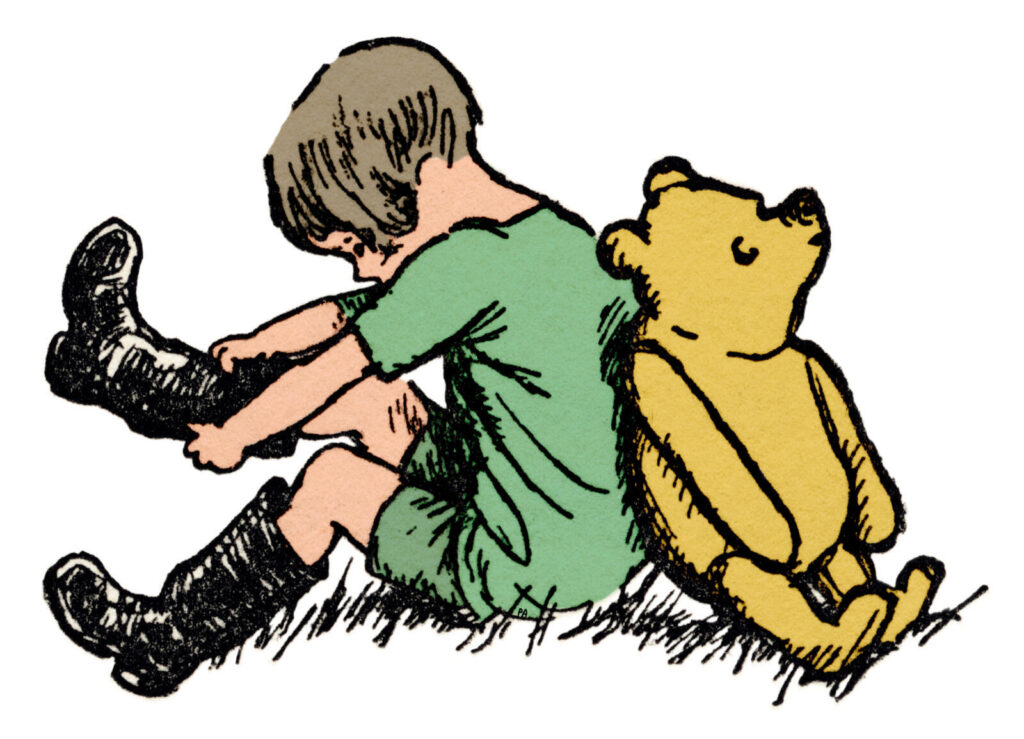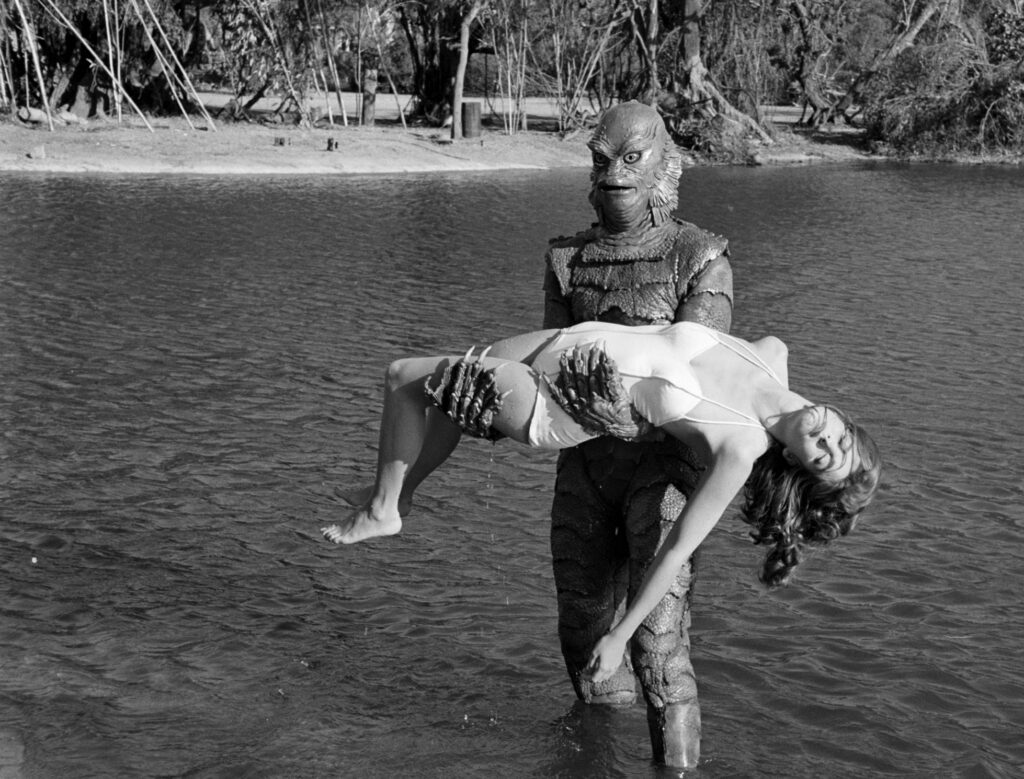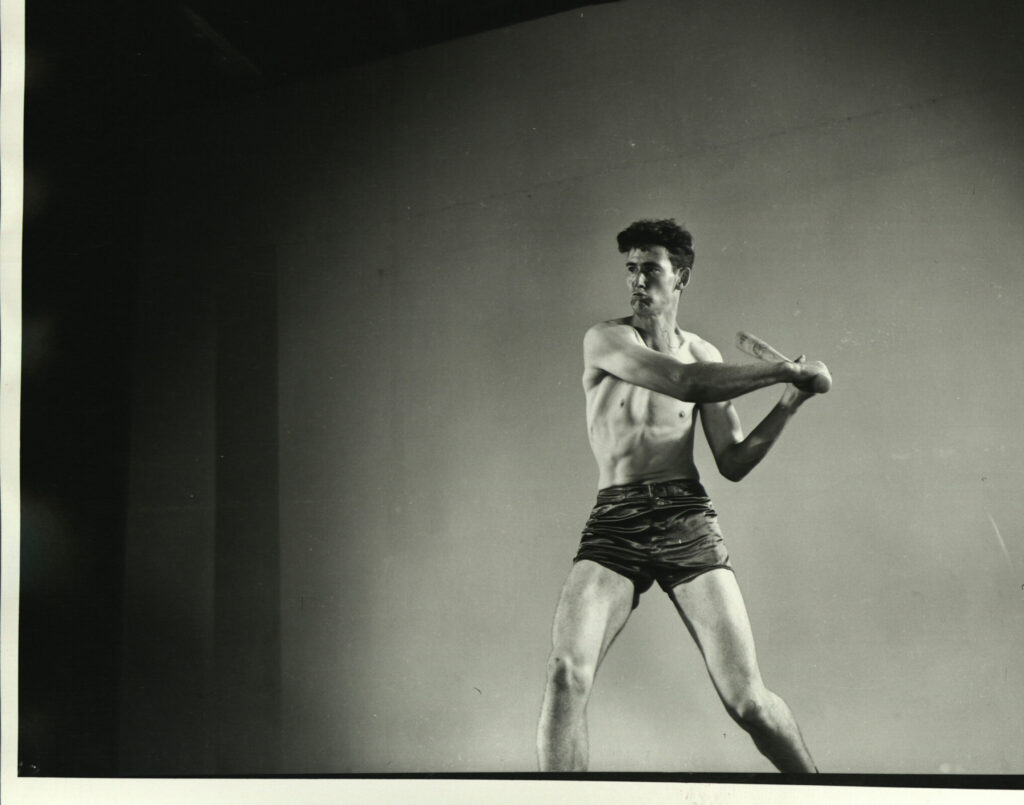For a few weeks in 1963, Americans could see the Mona Lisa without having to go to the Louvre.
That’s because the Leonardo da Vinci masterpiece crossed the Atlantic ocean by boat for a one-of-a-kind visit to the National Gallery of Art in Washington D.C. and the Metropolitan Museum of Art in New York. This was the only time the painting came to the Americas, and likely the only time it ever will. The only other occasions on which the Mona Lisa has left France were in 1911, when it was stolen by an Italian museum worker and briefly taken to Italy, and in 1974, when the painting traveled for exhibitions in Japan and Russia.
How did the U.S. visit even come about? Credit First Lady (and LIFE magazine favorite) Jacqueline Kennedy, who spoke French fluently and made the request in person to Andre Malraux, the French minister of cultural affairs, during a dinner at the White House. According to Margaret Leslie Davis’s book Mona Lisa in Camelot, Jackie Kennedy wanted the painting to come to America because she “saw the exhibition as an unmatched opportunity to burnish the American image at home and abroad, and [as] a convincing emblem of friendship between France and the U.S. It was a well-chosen gesture of amity, goodwill, and fervent diplomacy.”
The plan to send the Mona Lisa to America was not popular in France, with art experts calling the idea “insane” and “deadly.” They worried that harm would come to this famous and fragile work of art, which was painted in 1503, either because of accidental damage or an act of terror.
French officials did everything they could to make sure Mona Lisa’s journey was a safe one. Here’s how LIFE described the painting’s journey from Paris to Washington in December 1962.
Surrounded by grandeur that would have done credit to Charles de Gaulle, she had travelled on the S.S. France in a deluxe suite that would have cost an ordinary passenger $2,000. Day and night four guards and three museum officials hovered around to check her temperature and see that her wraps didn’t slip off….She was spirited into an air-conditioned van on a New York dock and whisked to the National Gallery in Washington.
The trip from New York to Washington apparently included the van making a stop at a roadside filling station—probably the nearest the Mona Lisa has ever been to a five-cent hot dog. The photo of the van at the filling station is one of many shot by LIFE’s John Loengard, who documented the van journey and of a press viewing in Washington D.C. The painting was exhibited in Washington for three weeks in January 1963, when it was seen by more than a half-million visitors, who waited up to two hours in line for their glimpse of it. Then the painting returned back up to New York, where LIFE’s Ralph Morse took some more photos of the masterpiece on its way to the Met.
After nearly a month in New York, the Mona Lisa returned to France looking no worse for wear.

A French security guard with the crated ‘Mona Lisa’ painting in the state room of a French liner enroute to the US for an exhibit. 1962.
Ralph Morse/Life Picture Collection/Shutterstock

The Mona Lisa was transported by van from New York to Washington D.C. during its U.S. visit in 1962.
John Loengard/Life Picture Collection/Shutterstock

The Mona Lisa was transported by van from New York to Washington D.C. during its U.S. visit in 1962.
John Loengard/Life Picture Collection/Shutterstock

During a visit to New York and Washington D.C.. in 1963, the Mona Lisa made the trip by van, 1962.
John Loengard/Life Picture Collection/Shutterstock

The Mona Lisa (inside its transport crate) came to the National Gallery of Art in Washington, D.C., 1962.
John Loengard/Life Picture Collection/Shutterstock

The Mona Lisa (inside its transport crate) came to the National Gallery of Art in Washington, D.C., 1962.
John Loengard/Life Picture Collection/Shutterstock

The Mona Lisa at the National Gallery of Art in Washington, D.C., 1963.
John Loengard/Life Picture Collection/Shutterstock

The Mona Lisa at the National Gallery of Art in Washington, D.C., 1963.
John Loengard/Life Picture Collection/Shutterstock

The Mona Lisa at the National Gallery of Art in Washington, D.C., 1963.
John Loengard/Life Picture Collection/Shutterstock

The press at the visit of the Mona Lisa to Washington D.C., 1963.
John Loengard/Life Picture Collection/Shutterstock

A security guard kept its eye on the Mona Lisa during its visit to the National Gallery of Art, 1963.
John Loengard/Life Picture Collection/Shutterstock

The Mona Lisa at the National Gallery of Art in Washington, D.C., 1963.
John Loengard/Life Picture Collection/Shutterstock

The Mona Lisa at the National Gallery of Art in Washington, D.C., 1963.
John Loengard/Life Picture Collection/Shutterstock

The Mona Lisa, on a goodwill trip from France, arrived in New York City in a protective box, 1963.
Ralph Morse/Life Picture Collection/Shutterstock

The Mona Lisa, on a goodwill trip from France, arrived in New York City in a protective box, 1963.
Ralph Morse/Life Picture Collection/Shutterstock

The Mona Lisa, on loan from France, hung in a vault at the National Gallery of Art in Washington D.C., 1963.
John Leongard/Life Picture Collection/Shutterstock
